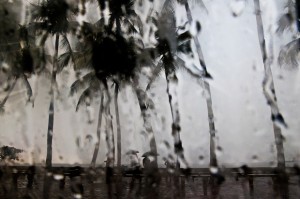Time to prepare rainy season emergency hits
MANILA, Philippines–With the onset of the typhoon season, it’s time to load up an emergency kit that includes at least three days’ supply of nutritious food, the National Nutrition Council (NNC) said on Wednesday.
The NNC, which is celebrating Nutrition Month this July with the theme “Kalamidad Paghandaan,” released Wednesday a list of foodstuff that should go into a family’s emergency kit to avoid nutritional problems during disasters or emergencies.
Aside from flashlights and matches and other emergency tools and clothing, the following should be included in the standby kit:
— At least three days’ supply of nonperishable food items—foods that can be stored at room temperature, are tightly sealed and lightweight. These include: dried fruits and dried fish, canned juices and milk for adults; canned sardines, meat, fruits and vegetables; high energy food such as peanut butter, jelly and crackers; comfort food such as biscuits, hard candy, instant cereal and instant coffee.
— At least 4 liters of water stored in clean plastic bottles per person a day, of which 2 L should be reserved for drinking and the other half for food preparation and cleaning.
Article continues after this advertisement— Food items for infants and elderly persons with a special diet must also be secured.
Article continues after this advertisement“For families with breastfeeding children, a breastfeeding kit should be prepared on hand,” it said. The breastfeeding kit must include a malong, a feeding cup with cover, food container with spoon and fork, 1 L glass tumbler with cover and birth registration form.
The NNC said it was important to focus on nutrition in times of emergencies since malnutrition in the Philippines was already a preexisting problem and could worsen when disasters occur.
It identified three nutritional problems during emergencies: acute malnutrition, especially after three months of insufficient intake of food or after suffering from infections and other diseases; chronic malnutrition; and micronutrient deficiencies, particularly in Vitamin A, iron and iodine.
These micronutrient deficiencies are common during emergencies because of “disrupted food supply, incidence of infectious diseases, particularly diarrhea which impairs nutrient absorption and increases the need for these micronutrients,” said the NNC.
Based on the 2011 National Nutrition Survey of the Food and Nutrition Research Institute, 20.2 percent of Filipino children aged 0-5 years were underweight while 7.3 percent of children belonging to the same age group were wasted or of low weight for one’s height.
Results of the 2008 of the National Nutrition Survey also showed that 19.5 percent of Filipinos suffer from anemia, of which 55.7 percent of infants aged 6-11 months were the most affected followed by 42.5 percent of pregnant women.
The study also showed that 66.9 percent of Filipino households did not meet their dietary requirement.
